by Gaye Hammond, Master Rosarian, Houston Rose Society
This article is an AOM winner
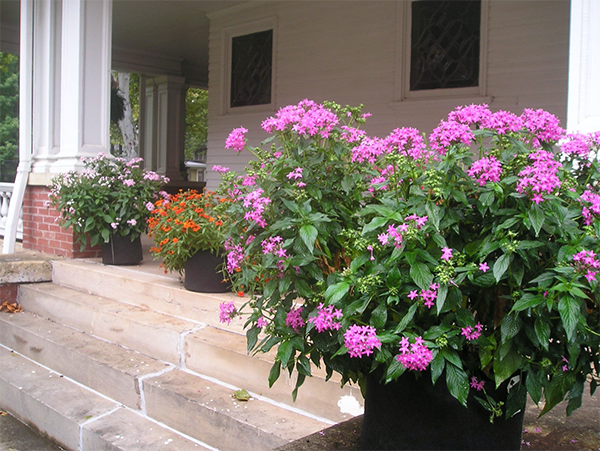
Root deformation and heat saturation of planting media are common challenges associated with growing roses and other plants in a container – whether you are a commercial producer or a rose grower. A strong root mass means a strong plant and a strong plant is more resistant to insects, disease, weather fluctuations and is easier to care for overall.
Advances in technologies are helping address and overcome these challenges. Researchers at the University of Florence (Italy) have studied the effect of container design on long term plant health and their findings are very interesting. Plants grown for a long period in smooth-sided plastic pots result in deformed root systems. This happens because lateral roots are prevented from the normal horizontal growth pattern, contact the sides of the container, turn and begin to circle the root ball or the roots grow vertically to the bottom of the container and then begin to circle.
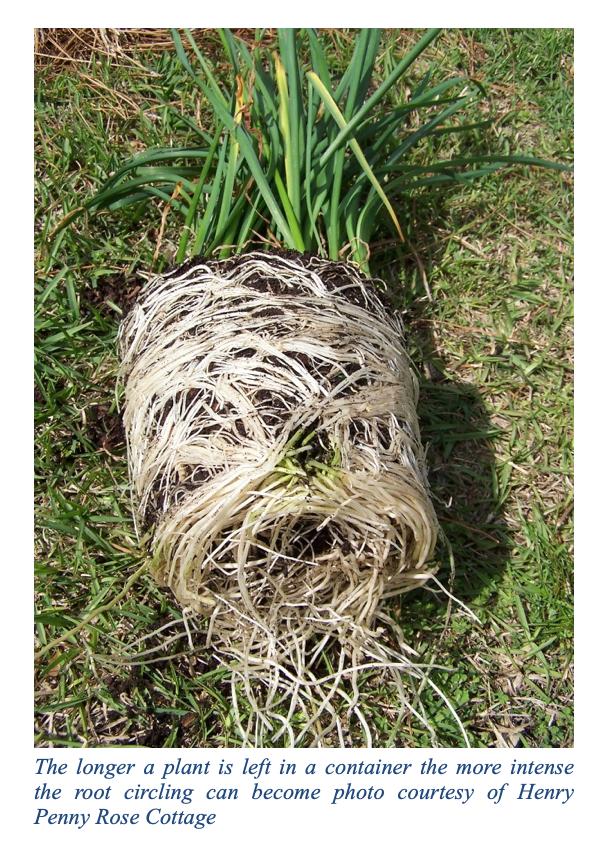
Some refer to this as the plant being “root bound” or “girdled.” Kurt Reiger at High Caliper Growing explains, “In plastic, roots circle the outside of the soil mass and leave a blank space in the middle. We are root specialists. Plants perform much better when they have a fuller, more complete and defined root structure. This is especially important for plants from which cuttings will be taken (like roses).” Circling roots that form at the bottom of the container usually fail to change direction and grow into the soil profile when transplanted. Eventually reduced root growth and continued root deformation impacts the overall vigor of the plant.
Mechanical intervention by making cuts on the root ball periphery or splitting and splaying the bottom third of the root mass are two common strategies for dealing with “root bound” plants. However, both strategies can cause transplant shock of already stressed plants. Correcting a malformed root system is critical to the long term health of a rose, especially hybridizers working with new seedlings.
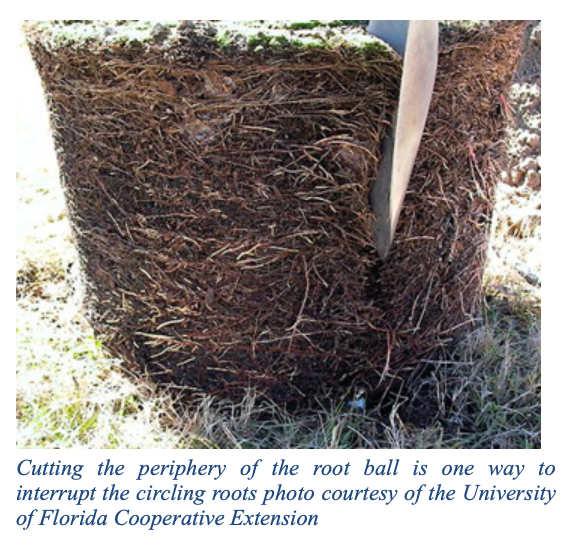
The evolution of container designs intended to reduce deformation run the gamut of options from disrupting smooth container walls by inserting ridges; coating the inside of the container with a root-growth inhibitor; injecting root-inhibiting chemicals directly into the plastic before the container is formed and/or using woven plastic strands formed to shape that, in effect, cause roots to be air-pruned once they emerge into open air.
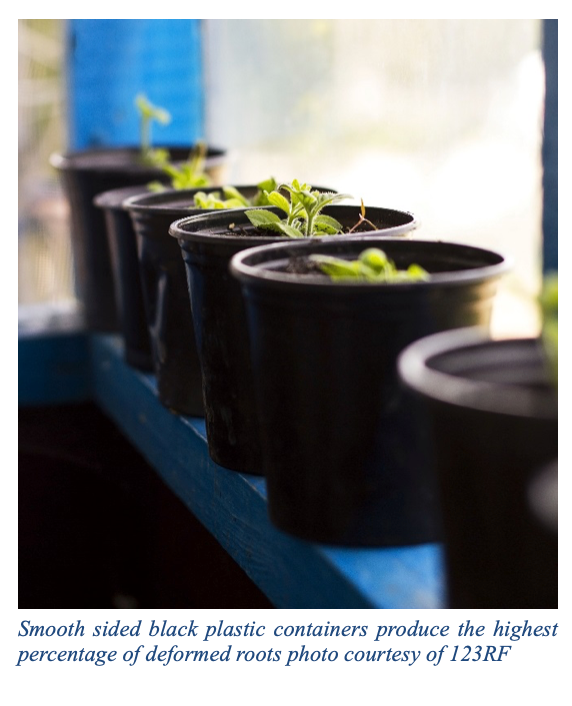
By testing panoply of container designs, scientists found that traditional smooth-sided containers produced and highest percentage of deformed roots when compared to plants grown in containers with air-pruning or mechanical impediments.
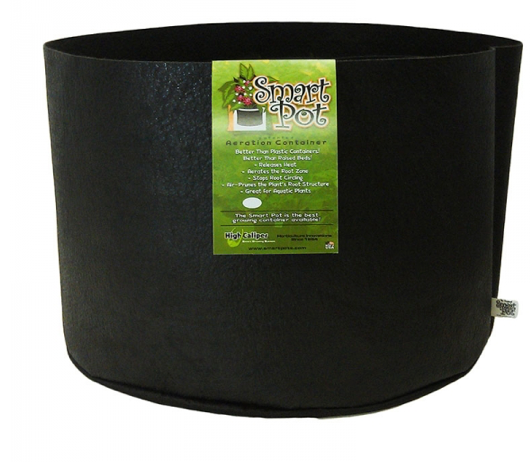
A solution to these challenges literally dropped into my arms at the Texas Nursery & Landscape Association Exposition several years ago. That year, I saved a display of Smart Pots™ (High Caliper Growing, Oklahoma City, Oklahoma) from tipping over and for coming to the product’s rescue went home with a Smart Pot™. The company representative suggested I walk through the trade floor and take note of how many of the fully grown trees at the Expo had been planted in these patented fabric pots. I was impressed.
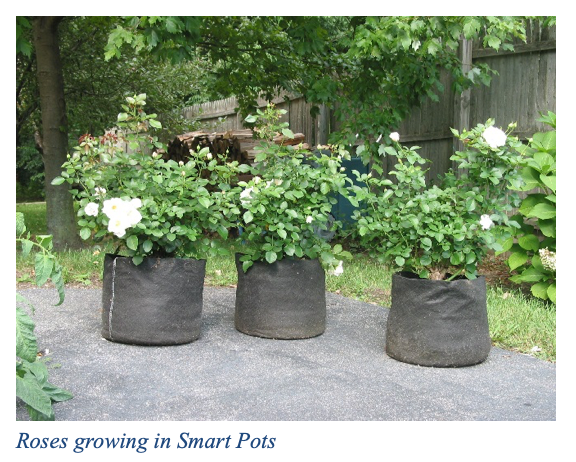
Research has been done by Dr. Michael Arnold and Dr. Garry McDonald at Texas A&M University on the use of Smart Pots™ to reduce root deformation of container-grown Knock Out® Roses. According to Dr. Arnold, “Root deformation in the form of deflected roots at the container wall is an inherent problem associated with limited root volume of a container that leads to circling or kinked roots that may persist when plants are transplanted to either larger containers or in the landscape.” Dr. Arnold found that the use of Smart Pots™ decreased root deformation and circling of container-grown rose roots by five times and also doubled the size of the root mass compared to traditional plastic containers.
In a Smart Pot™, when a root tip reaches the side of the fabric container, it stops in place and initiates lateral or side-branching. As the process repeats itself, the entire area of the container is filled with fibrous root growth, allowing more surface area for mineral and water absorption.

Root architecture problems are not the only limitation when it comes to container-grown plants. Increased temperatures in the root zones, due to reflected radiant heat from gravel, concrete or other surfaces, together with container design materials can also negatively affect plant roots. According to the University of Illinois, dark colored, metal and black plastic containers develop the highest root zone temperatures.
Drs. Arnold and McDonald also found that the root balls of plants in Smart Pots™ were noticeably cooler and moister to the touch compared to those in black plastic containers, suggesting that evaporative cooling may be the cause of the reduced temperatures. With an outside ambient atmospheric temperature of a whopping 106° F roses grown in black plastic pots had a substrate temperature of 130.8° F, while plants in Smart Pots™ had substrate temperatures more than 33° cooler (97.4° F).
Technology has made us smarter about our pots!




























































